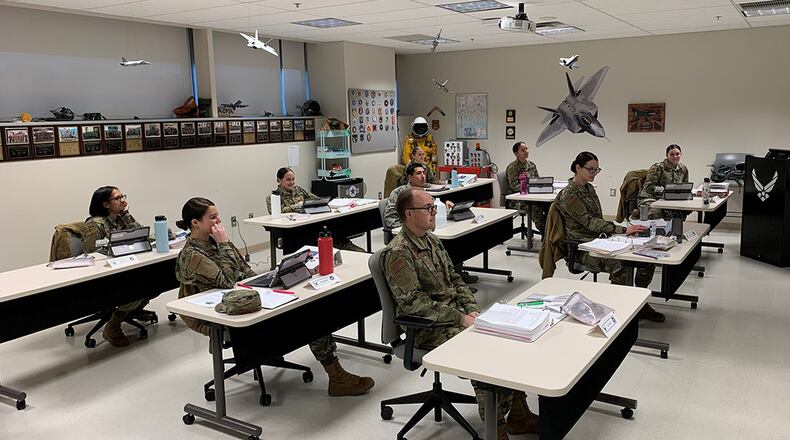“The safety of our students is always our first priority,” said Capt. Matthew Smith, USAFSAM Squadron section commander. “We screen the students twice a day and are briefing them daily on possible warning signs and symptoms of COVID-19. In addition, our dorms are receiving increased focus on cleanliness and we have split classes up to allow for social distancing. Our students are always engaged in a robust cleaning routine in the dorms.”
In addition, where possible, innovative educators from the school have shifted some content to distance or tele-learning.
“My MTL’s [military training leaders] and I take our charge to protect these Airmen very seriously,” Smith said.
There are two types of students who attend training at the USAFSAM school house. Currently, there are approximately 100 pipeline, or non-prior service students, in house for 3-level awarding courses.
“In addition, USAFSAM is the home of aerospace and operational medicine expertise, and we are responsible for training both pre-deployment and clinical currency refresher courses,” Smith said.
USAFSAM has multiple mission-essential missions, such as the epidemiology lab, currently on the front lines against COVID-19, and critical roles in the aviation and aeromedical pipelines.
“We can’t afford to just close up shop and go home; so it’s up to us to balance mission requirements with force health protection. Many operational elements within the Air Force that are still engaged in the warfighting mission depend on our output. They trust us to get the job done no matter what, and we’re figuring out what that looks like day by day and moving the mission forward,” said Smith.
The U.S. Air Force School of Aerospace Medicine trains approximately 6,000 students each year. The school house is uniquely situated within the Air Force Research Laboratory’s 711th Human Performance Wing, which has both research and medical missions that all tie back to increasing Airman availability and safety, enhancing their performance, all while optimizing resources.
To stay up-to-date on the latest information on COVID-19, go to the Wright-Patterson AFB COVID-19 information page at www.wpafb.af.mil/coronavirus . The page is continuously updated as new information is being received.
About the Author
